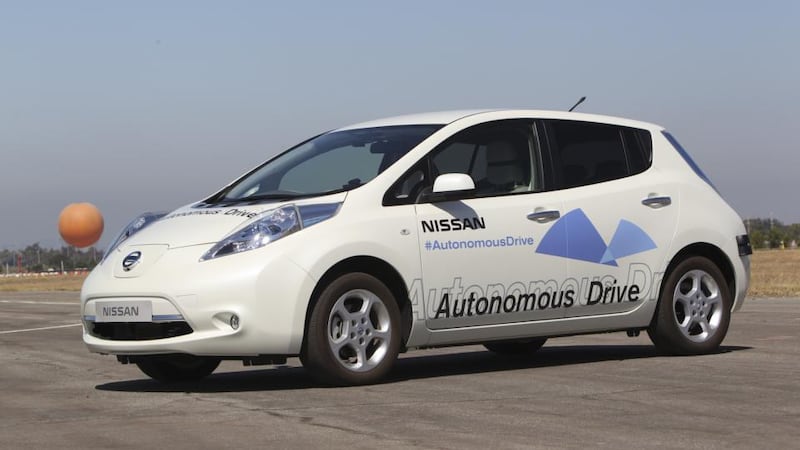The self-driving car, embraced as a stress-reducing convenience for harried drivers and a potential advance in road safety, could also prove to be a life- changing breakthrough for many people with disabilities, granting them a new measure of independence.
While much of the necessary technology is well along in development, those awaiting vehicles that can provide unassisted transportation will have to be patient. Car makers have demonstrated cars capable of self-driving operation, however, and in August the chief executive of Nissan, Carlos Ghosn, said the firm would offer a car with "autonomous drive technology" by 2020.
Ghosn did not promise a vehicle that could be operated without a driver at the wheel, and a Nissan spokeswoman said the company had not studied the disability issue.

Confirming Nissan’s first self-driving car would require an able-bodied driver, she said all carmakers were taking that approach: “At this point, the driver has to be able to operate the vehicle.”
Societal benefits
General Motors
is among the makers demonstrating self-driving prototypes, and a driver-assistance technology it calls Super Cruise, to be introduced in 2017-model Cadillacs, makes partly autonomous operation possible on the road. Still, the company is reserved in its optimism.
“We believe that one day there will be fully automated cars that drive themselves under all circumstances,” a GM spokesman said. “A lot of societal benefits are possible, but we’re years away from achieving those benefits.”
Audi recently obtained a permit to test self-driving cars on California roads. The cars are equipped with manual controls so a driver can take over if necessary.
“Present-day tech developed by every automaker and accepted by state laws requires human ability to take over,” a company spokesman said. “Fully autonomous driving is mostly a human generation away, no matter who is making promises.”
Google is making promises, or at least offering suggestions. The company, which declined to provide an interview for this article, has developed two prototypes. The first was a standard vehicle fitted with sensors, hardware and computers that enabled self- driving. Equipped with steering wheel and brakes, it could be operated by a backup driver in an emergency.
The second-generation Google car is driverless and has no steering wheel or brake pedal. Driver intervention is impossible, even in an emergency, so its design would be appropriate for people physically unable to operate a vehicle.
In a blog post last April, Chris Umson, director of Google's self-driving car project, said the company was growing more optimistic about reaching an achievable goal – "a vehicle that operates fully without human intervention".
Retrofitted Toyota
In a statement, Google said the potential of a self-driver to help those with disabilities could be realised only if the human operator were taken out of the equation. The company maintains denying the driver an active role in vehicle control would eliminate human error and improve driving safety.
Steve Mahan, executive director of the Santa Clara Valley Blind Centre in California, has ridden in both of Google's prototypes. Mahon (61) is legally blind. Google contacted him about three years ago to discuss how self-driving vehicles might benefit the disabled. He was offered a chance to experience Google's retrofitted Toyota Prius and provide feedback. He has since ridden in the new driverless prototype.
“They’re looking at a paradigm shift in transportation, where the vehicles assume all of the driving tasks for efficiency and safety,” he said.
“I’ve been in the Google cars quite a bit in urban traffic and highway. The technology is incredibly capable. They drive like good drivers. I spoke to a programmer who helps define how the car behaves. I told him: ‘So you’re the person who made these cars drive like my wife.’” © 2014 New York Times News Service











